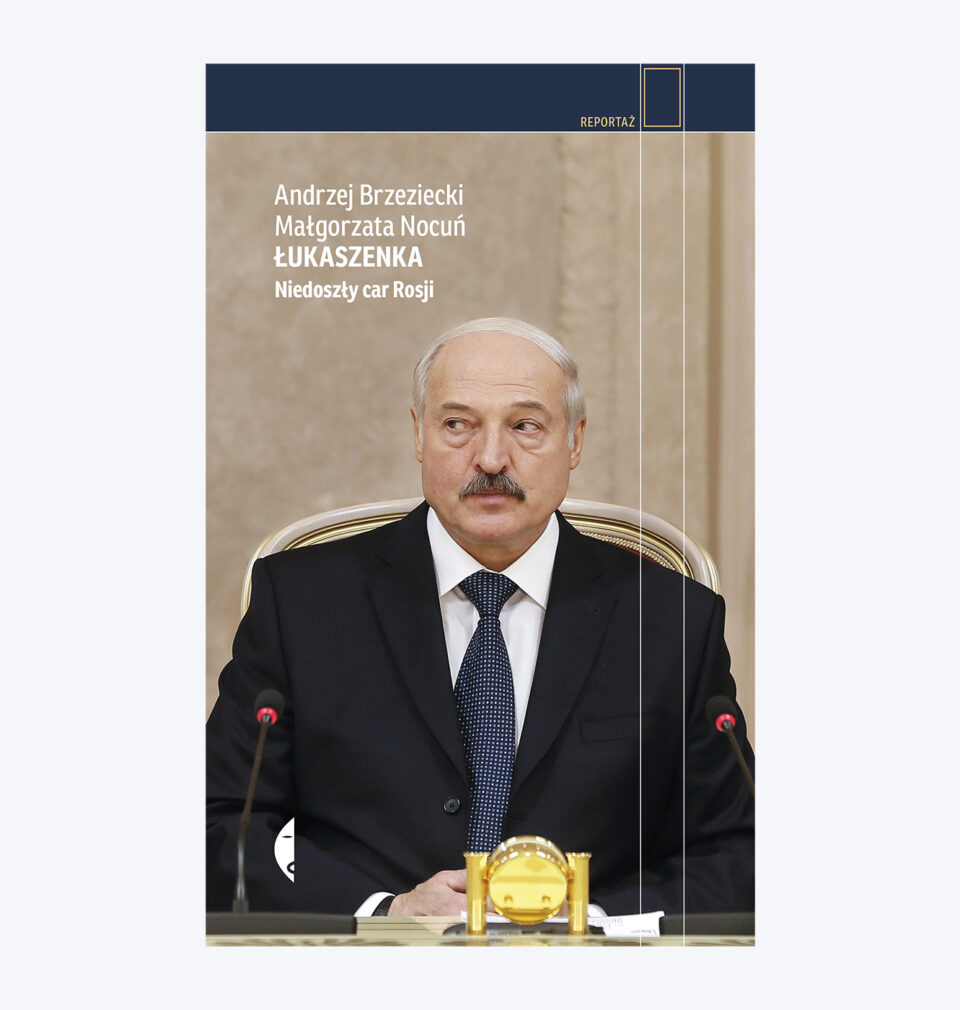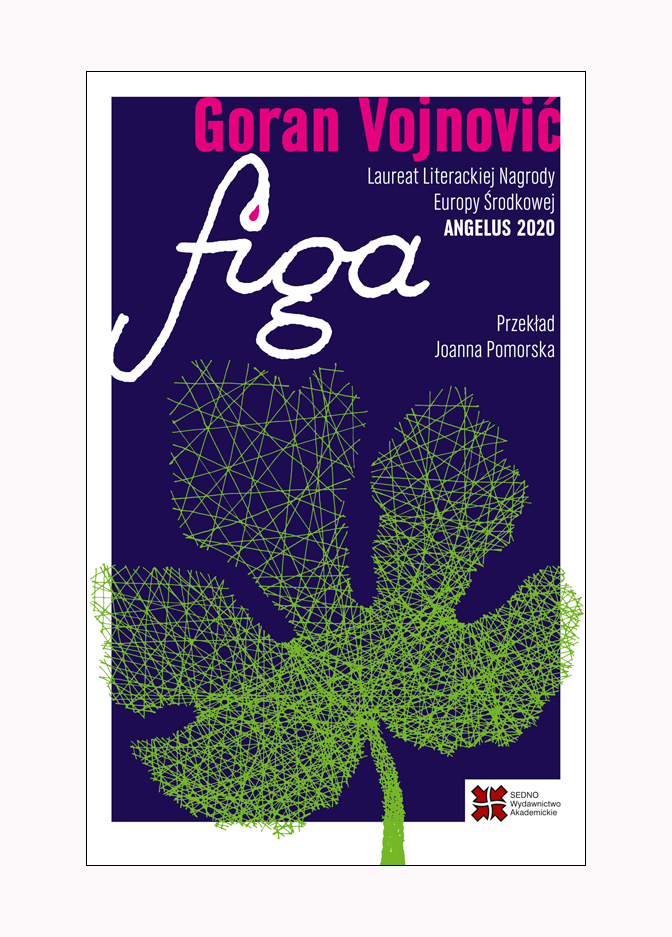
Worth a look
“Lukashenko. The Would-Be Tsar of Russia”, Andrzej Brzeziecki, Małgorzata Nocuń, Czarne, Wołowiec 2021
Many years in power is, of course, a rich subject for memes. On some, Putin smiles mockingly at the bewildered eyes of Francis – after all, the third of popes, usually reigning for life, to take turns on the throne while Vladimir Vladimirovich remains on it. In others, Elizabeth II leans towards Putin, Ali Khamenei and Emomali Rahmon with the usual “Hold my beer” retort. Most telling, however, are the juxtapositions of images that came about naturally, without satirical intent. The biographical note on Lukashenka in the Polish version of Wikipedia may serve as an example: it is illustrated with anti-Lukashenka graffiti from Warsaw streets, sprayed in 2002. Their authors are now probably in their forties; if the graffiti has not yet been painted over, it will be dealt with by a conservator any year now.
In this respect, Lukashenka’s dictatorship is unique: less bloody than the governments of Central Asian or African tyrants (although, of course, it is very convenient to write such a sentence without being the mother of Raman Bondarenko, who was tortured last November), it seems to be distinctly out of time. It is as if the popular image of Belarus (‘dobrorusi, sennorusi’ from Konwicki’s old incantations) shaped the image and practice of the president of six terms: autumn, fog, smoke rolls over potato fields, OMON is beating up a handful of students on a too-wide Minsk street. It’s always like that in this country…
It is not easy to distance oneself from such a vision and create a description of a politician’s life more attractive than a calendar of official activities. Especially if one takes into account that Alexander Grigoryevich’s road to power, that is – counting generously – the decade of 1985-1994, is the most spectacular one. It was then that he sailed, carried by the stormy winds of perestroika: from promotion to the director of sovkhoz through deputy to freely elected president. By the beginning of the 21st century there was still something going on: scandalous statements, kidnapping of opponents and journalists, death squads. And then? Then it was just a lull, a standstill, a calm sea.
The solution, of course, is to go deeper into the potato patch, to ask questions about the reasons for such a long reign, such a weakness of popular resistance. Małgorzata Nocuń and Andrzej Brzeziecki, the authors of the biography of the ‘would-be tsar’, do this, of course: from the middle of the book they basically abandon chronicle narration and rather discuss various levels of Lukashenka’s activity in domestic and international politics, his private life and the historical policy he creates. They also do not shy away from the question which is probably the most important for both historians and activists, namely the reasons why the dictator remained in power for over a quarter of a century. What deep needs and fears of the Belarusian people does this ruler satisfy?
Another thing is that, for journalists who have been professionally writing about Belarus for a dozen or so years, and at the same time declaring their distance from narrations perceived by them as too traditional, Polish-centric or patriarchal, Nocuń and Brzezicki sometimes reach for rather stereotypical phrases. Personally, I am inclined to agree with the sentence ‘It is precisely such a [industrious – W.S.] leader that Belarusians need, as they are a nation unwilling to take matters into their own hands’: indeed, historical circumstances painfully stripped the ancestors of today’s Belarusians of their subjectivity. However, it is not difficult to imagine accusing the authors of such a phrase of a narrative tainted with paternalism, or even, God forbid, with a ‘colonial perspective’.
I am very far from such reservations, especially knowing from Nocuń and Brzezicki’s previous books (and quite a number of journalistic pieces) that they were involved in Belarusian affairs, that they had excellent relations with Minsk-based artists, writers and oppositionists. At the same time, however, I have an impression that the whole panorama of Lukashenka’s rule is not very deep: many of the facts recalled are usually known to readers who are familiar with Belarusian affairs, which causes an effect of a certain, so to speak, muddiness: yes, Shklov, Kuropaty, Zenon Paźniak, Mikhail Czyhir – we know, we know.
This accumulation of quite basic information can be seen as consistent with the book’s aim of introducing Belarus to a wide range of readers. This approach is evidenced by humorous, storytelling-style subtitles of individual chapters (it is a pity that they were not included in the table of contents) or references to authors who are somewhat past their prime, but widely recognised, such as Roj Lebedev. Unfortunately, however, this is not the only aspect of the book that feels bare: the least edifying element is the Bibliography at the end. It is a bit of a Potemkin village of a title for the fifteen books listed there. If we add that, of this number, two are by the authors themselves, one is a fairly classic (The Prince by Machiavelli), and the most recent was published in 2013, it does not improve the situation, nor do the eight newspapers and seven portals (including Wikipedia and YouTube) cited. All the more so given that we are dealing with the second edition of Lukashenko, prepared, as one might guess, in response to the latest wave of social discontent in Belarus, and at the same time a hardening of Moscow’s stance, seeking to increase the scope of its control over its neighbouring country.
In this context, it is valuable that Nocuń and Brzeziecki recognise that the most important characteristic of Lukashenka’s rule is his completely unrealistic project to expand his presidential power (by means of variously named ‘union state’ structures, i.e. a mini-federation of Russia and Belarus) as far as Kamchatka. The authors declared such a perspective already in the title and most reliably elaborated (and updated) those chapters dealing with relations between Minsk and Moscow and with Putin’s subjugation of Lukashenka and the former’s evasions. However, this is far from enough. One could wish that the third, completed edition included much more information on Belarus’s relations with other countries of the region (the book only talks a little about the president’s polonophobia), on Lukashenka’s image in culture (in pop culture, in high culture, in the pranks of postmodernists and critical artists) or about changes in the historical identity of Belarusians. And, above all, that it should already be a publication that deals with a closed past in an obvious way.
Copyright © Herito 2020



